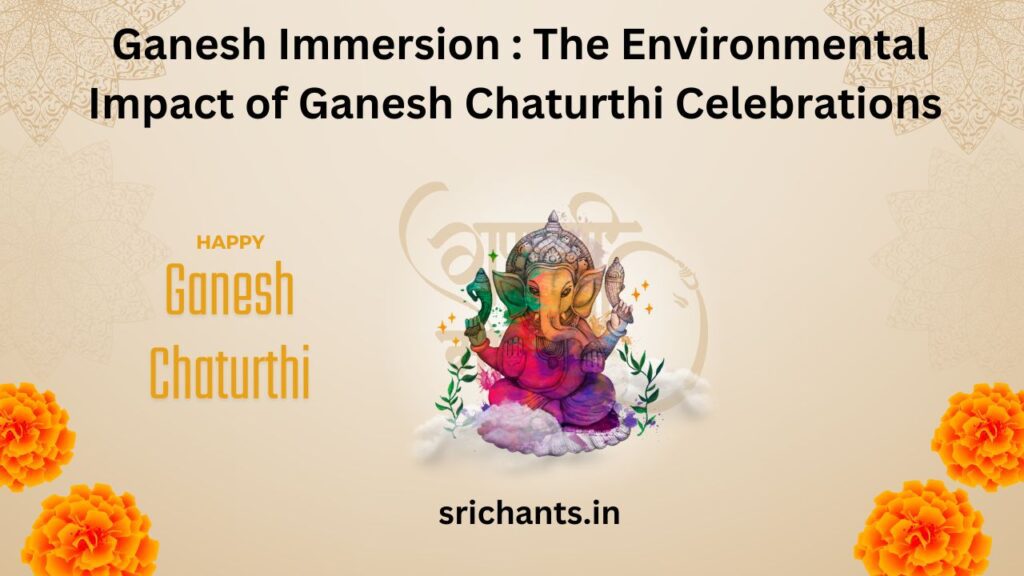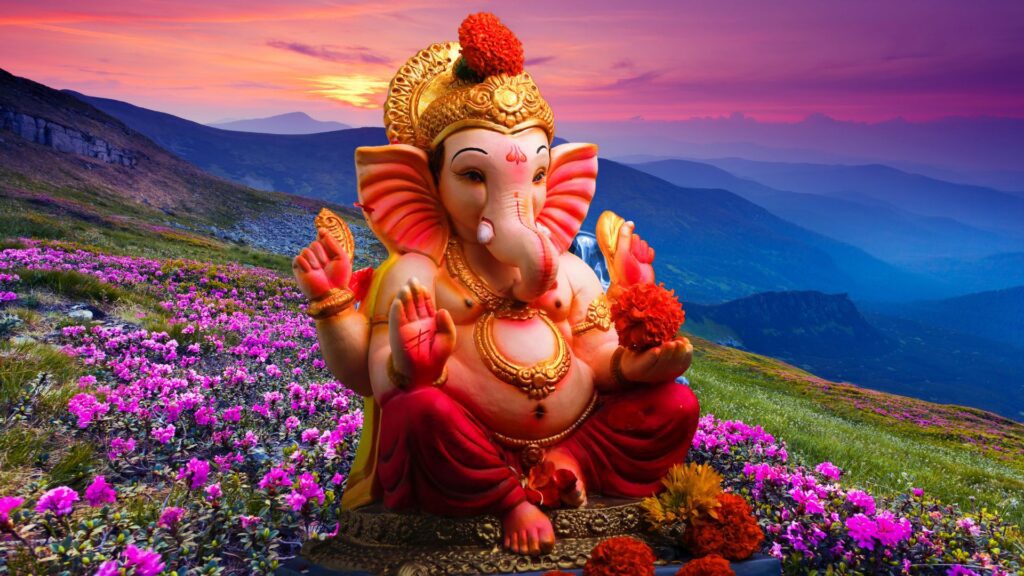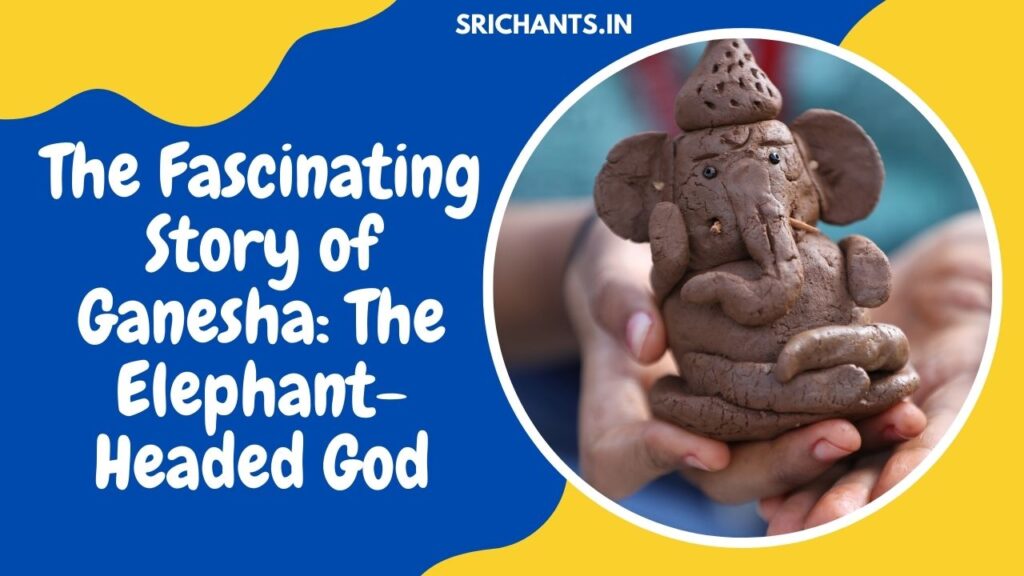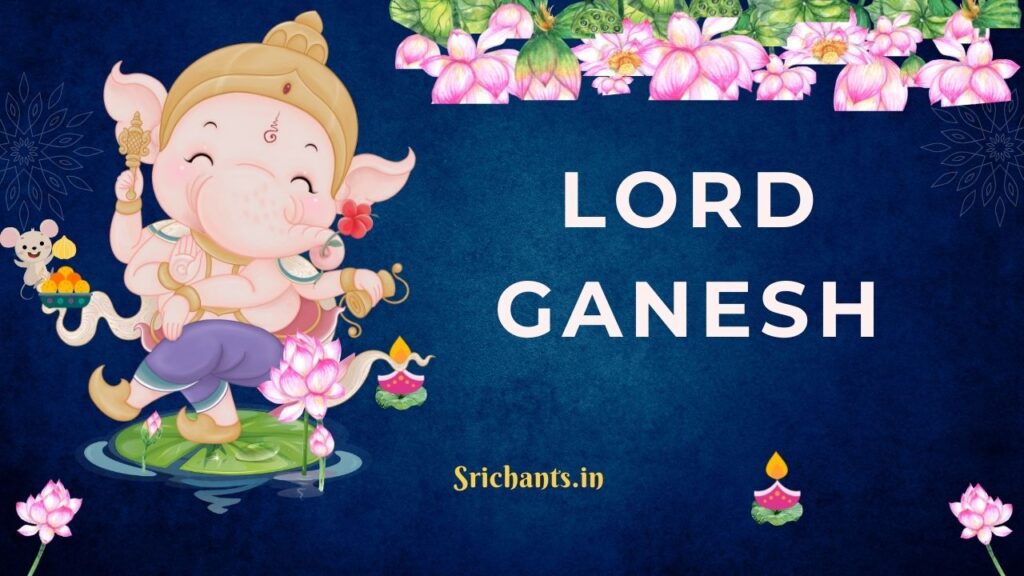Ganesh Immersion : The Environmental Impact of Ganesh Chaturthi Celebrations
Introduction
Ganesh Chaturthi is an extensively observed Hindu festival in India dedicated to commemorating the divine Ganesha’s birth. During this festival, which occurs from August to September, Ganapati idols are ceremoniously installed in both private residences and public spaces. Subsequently, devotees engage in prayers and present offerings. However, concerns have been expressed regarding the festival’s environmental impact due to its magnificence. This article aims to examine the environmental ramifications of Ganesh Chaturthi festivities and propose sustainable alternatives as a means of alleviating these impacts.
Understanding Ganesh Chaturthi and Its Significance
Hindu traditions attribute great cultural and religious importance to Ganesh Chaturthi. People congregate in jubilation and devotion to commemorate the birth of Lord Ganesha, the deity revered for his prowess and ability to eliminate barriers. Throughout the ten days of the festival, intricate ceremonies and rituals are carried out in reverence of the deity.
The Environmental Consequences of Ganesh Chaturthi
Although the festival fosters a sense of devotion and unites communities, it also has detrimental environmental effects. Diverse types of pollution result from the utilization of conventional Ganapati idols crafted from Plaster of Paris (PoP), in conjunction with pigments and embellishments containing chemicals. An examination of the precise ecological ramifications that ensue from Ganesh Chaturthi festivities is warranted.
Water Pollution from Idol Immersion
Water pollution caused by the immersion of idols is among the most significant environmental issues associated with Ganesh Chaturthi. Plaster of Paris is frequently used to create Ganapati idols; the substance requires months or even years to entirely dissolve in water. Aquatic life is harmed as these idols decompose due to the release of hazardous compounds and the reduction of oxygen levels in the water. Water pollution is frequently worsened by the presence of heavy metals such as lead, cadmium, and mercury in the paints used to embellish the idols.
Air Pollution from Fireworks and Traffic Congestion
Air pollution is an additional environmental consequence of Ganesh Chaturthi. During the festival, fireworks and firecrackers are frequently employed, resulting in the emission of hazardous vapors and toxic substances into the atmosphere. Air pollution is further exacerbated by the increased traffic congestion caused by the celebrations, as vehicles release contaminants including carbon monoxide and sulfur dioxide. These air pollutants are hazardous to human health and negatively impact air quality.
Solid Waste Generation and Disposal Issues
The celebrations of Ganesh Chaturthi produce a substantial quantity of solid refuse, presenting difficulties in terms of appropriate disposal. The festival also incorporates the presentation of food offerings, fruits, flowers, polymers, and thermocol decorations, in addition to the idols. These indegradable substances ultimately accumulate in aquatic ecosystems, causing obstructions and exacerbating environmental pollution. Water quality is further degraded by the chemicals and pesticides that are present in the flowers and other offerings.
Eco-Friendly Solutions for Ganesh Chaturthi Celebrations
In an effort to reduce the ecological consequences of Ganesh Chaturthi festivities, a multitude of sustainable alternatives and methodologies have surfaced. The objective of these alternatives is to maintain the festival’s integrity while reducing environmental damage. The following are some suggested resolutions:
Opt for Eco-Friendly Ganapati Idols
Rather than employing conventional idols crafted from Plaster of Paris, opt for environmentally sustainable substitutes. Idols constructed from natural materials or clay are biodegradable and environmentally safe. At-home immersion of these idols in a bucket of water will cause them to progressively dissolve without contaminating water bodies. In lieu of metal or stone idols, a betel nut may be symbolically submerged in an effort to encourage reuse.
Use Natural Colors and Non-Toxic Decorations
When embellishing the Ganapati idols, choose natural hues produced from food-safe dyes as opposed to pigments containing chemicals. These naturally occurring hues are non-polluting and biodegradable. In addition, opt for eco-friendly decorations constructed from sustainable materials rather than polymers and thermocol. Adopt environmentally sustainable alternatives such as paper-based ornaments or pesticide-free florals.
Promote Community Immersion Ponds and Tanks
In an effort to reduce the ecological footprint on natural water bodies, communities may opt to construct immersion ponds or containers. These man-made aquatic environments offer a regulated setting for the immersion of idols, thereby preventing the introduction of detrimental substances into lakes, rivers, or oceans. The implementation of this practice by the government in certain regions has already resulted in a reduction in the pollution that Ganesh Chaturthi festivities generate.
Spread Awareness and Educate the Community
It is imperative to raise awareness regarding the environmental ramifications associated with Ganesh Chaturthi festivities. Implement workshops, seminars, and awareness campaigns with the aim of enlightening individuals about the importance and relevance of environmentally sustainable practices. Promote the adoption of sustainable alternatives and environmental responsibility among communities and individuals attending festivals.
Government Initiatives and Regulations
In light of the environmental repercussions associated with Ganesh Chaturthi festivities, governmental bodies have enacted strategies to mitigate pollution. Authorities in certain municipalities have prohibited the use of Plaster of Paris idols in favor of environmentally responsible alternatives. In addition, particular bodies of water have been designated for the immersion of idols in order to mitigate the risk of contamination of natural water sources. Nevertheless, the efficacy of these regulations is contingent upon their implementation and the engaged involvement of the populace.
Conclusion
Ganesh Chaturthi is a highly esteemed occasion that fosters communal unity through acts of jubilation and veneration. Nevertheless, it is critical to recognize and confront the ecological consequences that arise from these festivities. By implementing environmentally conscious measures, including the utilization of sustainable idols, natural hues, and responsible disposal methods, it is possible to guarantee that the festival will continue to bring delight to attendees while minimizing its ecological impact. We should concurrently honor the essence of Ganesh Chaturthi and safeguard the invaluable bestowals of the natural world.








